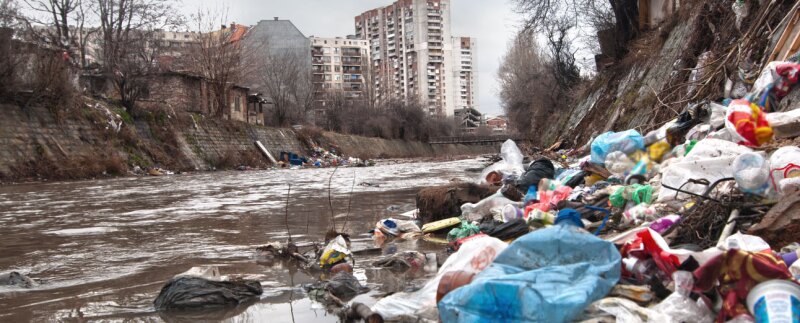The practice of environmental law is critical to the modern world. As the global focus on climate change only continues to grow, this essential work demands deep knowledge of relevant legal frameworks. Beyond legal knowledge, those who want to or already do practice environmental law will benefit from an intersectional understanding of environmental law and social justice, including a movement focused on environmental health and social justice that is known as “environmental justice.”
Environmental justice is not a new term, but it did only emerge in the last 30 years since the release of an impactful report on toxic waste and race. In this article, we will explore the report that shined a spotlight on how race was a key deciding factor in where toxic waste would be located.
A Pivotal Report on Toxic Waste and Race
The report, Toxic Wastes and Race in the United States: A National Report on the Racial and Socio-Economic Characteristics of Communities with Hazardous Waste Sites, was published in 1987 by the United Church for Christ Commission for Racial Justice. The core finding of this breakthrough report was that there were clear patterns showing that communities with higher percentages of minority populations were more likely to be chosen as sites for toxic waste facilities, with a disproportionate number of uncontrolled toxic waste sites being located in urban areas near black and hispanic neighborhoods.1 The report further suggests that this finding could not have happened by accident and rather the locations of these sites were found based on underlying factors related to race.
The recommendations made during this report were for immediate clean up of these sites for the protection of public health, with special focus on the uncontrolled sites in the noted black and hispanic neighborhoods. Specific recommendations and action items were listed out at the conclusion of the report for the federal government, municipalities, churches and community organizations and others.
Defining Environmental Justice
The Toxic Wastes and Race in the United States report helped to kick off the environmental justice movement, which has influenced government agencies and grassroots organizations alike. Environmental justice is defined by the U.S. Environmental Protection Agency (EPA) as “the fair treatment and meaningful involvement of all people regardless of race, color, national origin, or income with respect to the development, implementation and enforcement of environmental laws, regulations and policies.”2 The EPA further outlines that “fair treatment” means that no one group should be disproportionately affected by negative environmental consequences due to current government policies.
In the years following the release of the 1987 report, environmental justice became more ingrained in government agencies. This included the founding of the Environmental Equity Working Group at the EPA in 1990 and Executive Order No. 12898 signed in 1994.3 The working group at the EPA is now called the Federal Interagency Working Group on Environmental Justice and is focused on facilitating the involvement of federal agencies on Order No. 12898, which outlines federal actions to address environmental justice in minority and low-income areas.4
Environmental Justice in the 21st Century
A second report, Toxic Wastes and Race at Twenty, was commissioned by the United Church of Christ Justice and Witness Ministries and was published in 2007. This report found that the same disparities found in the 1987 report still persist, noting that race is still a more pertinent factor in the location of toxic waste sites than poverty level.5 The pressing recommendation here was that environmental injustice problems could be eliminated, not just alleviated, if laws—including environmental, health, housing, land use and civil rights laws—were enforced in a nondiscriminatory manner. This report again outlined specific action items for the various levels of U.S. government, non-governmental organizations (NGOs) and industries directly involved in and responsible for these toxic waste sites.
The main challenge noted in the report that still persists today is finding and training leaders focused on environmental justice, which will require funding.6 This callout is specifically noted as an action item for NGOs, with a focus on increasing the pool of people of color to lead the charge in environmental fields.
For those working in the legal profession, there is a significant and sorely needed opportunity to make an impact in the area of environmental justice.
Fight for Environmental Justice with a Degree from Tulane Online
Do you have a passion for the environment and social justice? Do you know what areas you want to focus on that can be enhanced with an environmental law degree? Tulane University Law School is proud to offer online Master of Jurisprudence degrees. In addition to environmental law, you can choose from concentrations in labor and employment law and energy law—all backed by the reputation of the 12th oldest law school in the U.S.
The online MJ in Environmental Law offers up-to-the-minute training in evolving regulations to participants on all sides of environmental issues—businesses, industries, individuals, governmental regulators, environmental groups and more. If you work in one of these regulated entities, regulatory bodies or advocacy groups, this is your opportunity to develop expertise across the field of environmental law.
Ready to get started? Speak with our admissions team or start your application today.
- Retrieved September 14, 2021, from uccfiles.com/pdf/ToxicWastes&Race.pdf
- Retrieved September 15, 2021, from epa.gov/environmentaljustice/learn-about-environmental-justice
- Retrieved September 14, 2021, from eli.org/vibrant-environment-blog/environmental-justice-21st-century-toxic-waste-and-race
- Retrieved September 15, 2021, from epa.gov/environmentaljustice/federal-interagency-working-group-environmental-justice-ej-iwg
- Retrieved September 15, 2021, from ucc.org/wp-content/uploads/2021/03/toxic-wastes-and-race-at-twenty-1987-2007_Part1.pdf
- Retrieved September 15, 2021, from ucc.org/wp-content/uploads/2021/03/toxic-wastes-and-race-at-twenty-1987-2007_Part1.pdf


